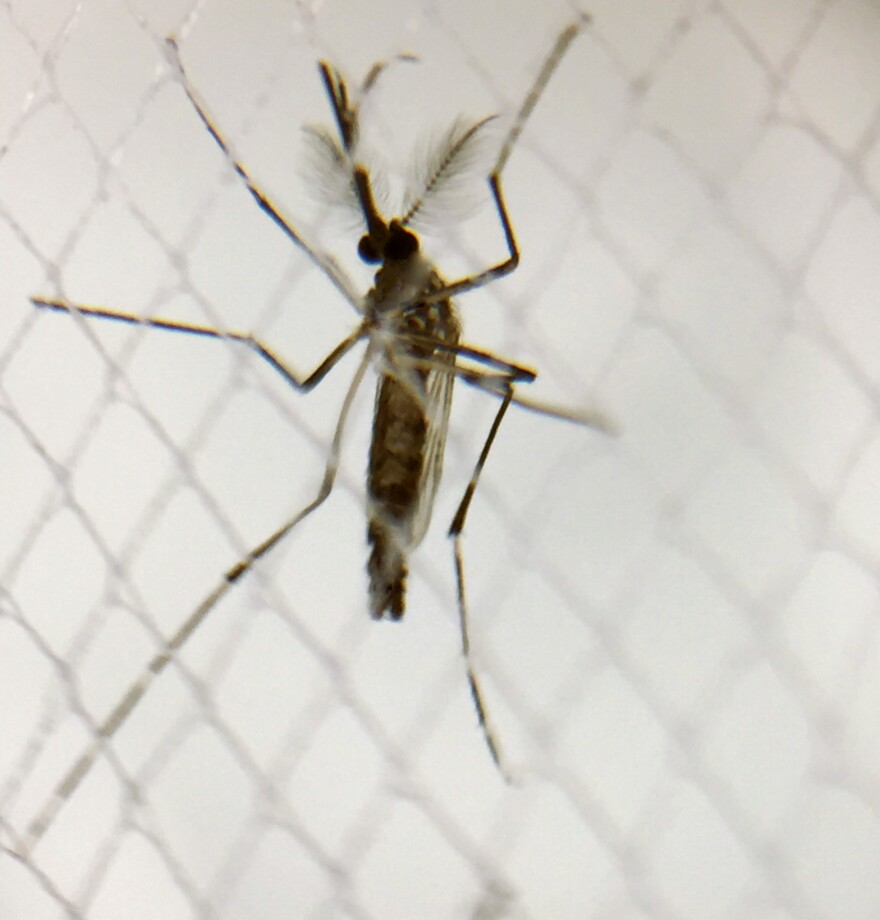Researchers at the University of California, Santa Barbara have made a breakthrough in using gene-editing CRISPR-Cas9 technology to create sterile male Aedes aegypti mosquitoes.
This method of targeting a specific gene tied to fertility in male mosquitoes — called “sterile insect technique,” or SIT — could control the population of Aedes aegypti without the pesticides. Researchers say it could even rid California of the invasive species, which first arrived in 2013 and has spread to nearly every county in the Golden State.
But is that a good idea?
UC Santa Barbara (UCSB) Professor Craig Montell, who led the research published in the Proceedings of the National Academy of Sciences, believes it is.
In an interview with KCBX News, Montell said, “mosquitoes are the most dangerous animals in the world. There are one billion people that get sick from mosquitos every year. I mean, we have a pandemic basically every single year from mosquitoes.”
Aedes aegypti is known as the “yellow fever mosquito” — and it can also spread other diseases like Zika, dengue, and chikungunya.
With that in mind, Montell set out to use CRISPR-Cas9 to create sterile male mosquitoes that, when paired with female Aedes aegypti, render the females infertile. That decreases the size of the next generation.
“The reason that’s very important is, it’s the females that bite you — not the males,’ Montell said.
According to Montell, this technology has the potential to reduce the spread of viruses like Zika and dengue.

Truc Dever is the president of the Mosquito and Vector Control Association of California, and the general manager of the Greater Los Angeles County Vector Control District.
Dever told KCBX News she’s in support of technologies like CRISPR-Cas9 to combat invasive species of mosquito.
“We’re definitely in support of new technologies, because the methodology we have is not ideal to combat Aedes aegypti,” Dever said. “The public health pesticide product[s] that we have are limited in their ability to deal with Aedes aegypti. There’s resistance issues, they’re not real susceptible to the chemicals that we have in our toolbox, and so we have to look at other innovative technologies. And this is just one component of our tools in the toolbox, so we want to expand that toolbox as best we can — and if that means this new technology with SIT technology, then we absolutely welcome it.”
Dever said sterile insect technique is needed because her ground crews can’t control the population of Aedes aegypti alone.
“These mosquitoes — we keep calling them invasive, but at some point they’re going to become endemic. They’re thriving quite well in our environment, and especially with climate change — that’s kind of where the nexus is in terms of conversations about climate change — we now have the climate that’s conducive to these mosquitoes to just live and thrive forever. So what can we do? We can enlist the sterilized male mosquitoes and try to beat them at their own game. And you do that through some of these technologies like gene-editing technology,” Dever said.
But Shannon Bennett, a microbiologist with the California Academy of Sciences, said this technology may not be a silver bullet.
“This might be a great and innovative way to scale Aedes aegypti where it’s invasive, but there’s a lot of underlying problems that need to be addressed,” Bennett said.
Those problems include the possibility of other species of mosquito filling the void if Aedes aegypti were to go away.
Bennett said she favors a multi-pronged approach to tackling the mosquito problem in California, including encouraging people to prevent water from pooling or becoming stagnant.
“Educating people to dump the water and put the infrastructure in place to not store water and to live in screened environments,” Bennett said.
There are other concerns raised by this technology.

Dr. Charles Binkley, director of bioethics at Santa Clara University, said “CRISPR-Cas9 isn’t necessarily perfect in the way that it works. And so there may be unintended effects and mutations on other genes. And so when you have a mutation on the gene, it can either make a loss of function or a gain of function. So there are all these things you don’t know, even with the precision of CRISPR-Cas9.”
Binkley also worries there could be some environmental effects to reducing or crashing the population of Aedes aegypti.
“There are all these anecdotal stories about changing something in our very tightly interrelated community causing downstream effects that we never anticipated,” Binkley said.
Another potential concern of Binkley’s is that it’s unknown if a mutation in a mosquito could cause adverse effects to humans when it bites.
“When you have this intermingling between insects and humans, particularly those in which blood is the key point of contact, and you have a mutation — I do think you do have to be thoughtful about what some of the effects could be,” Binkley said.
Montell acknowledged the concerns behind the technology he’s using, but since Aedes aegypti is not indigenous to California, he said “[in] most places it would not be an environmental concern. If we can get rid of Aedes aegypti here in California, we’re not messing up the environment, we’re returning it to what it was in 2013 when there was no Aedes aegypti here.”
As for some of the ethical concerns behind sterile insect technique, Montell said it would require public and governmental buy-in to make his plan a reality — he’s not proposing letting sterile male mosquitoes loose without it.
In the meantime, he said, this technology is only a few years away from possible implementation on a large scale.




